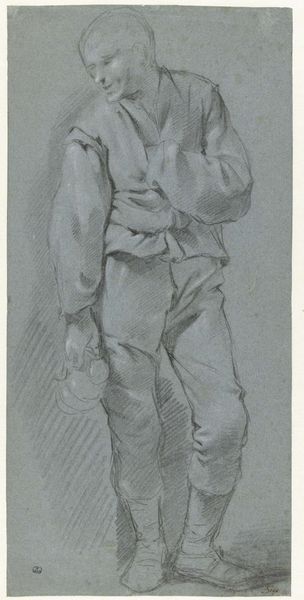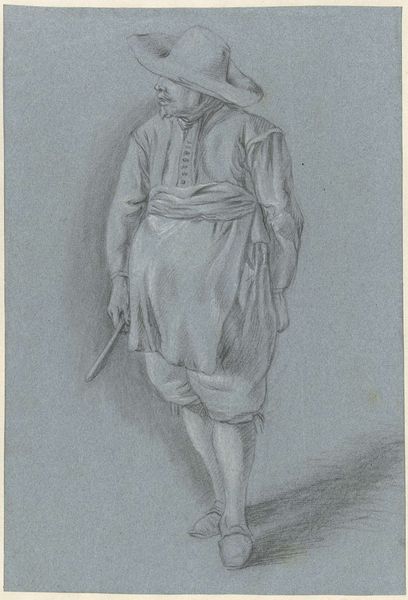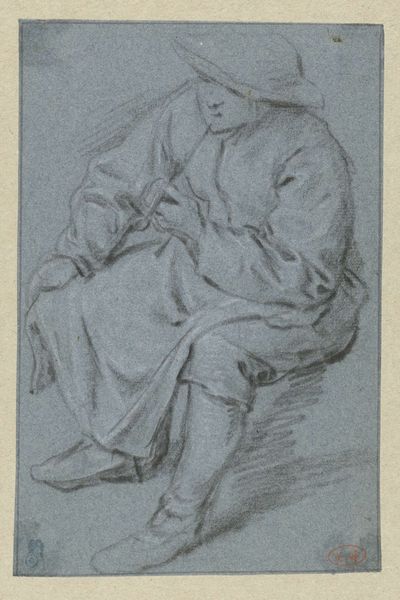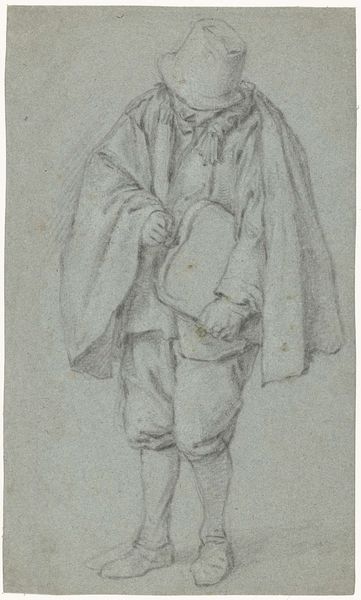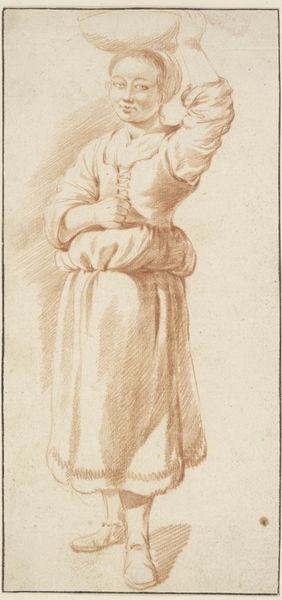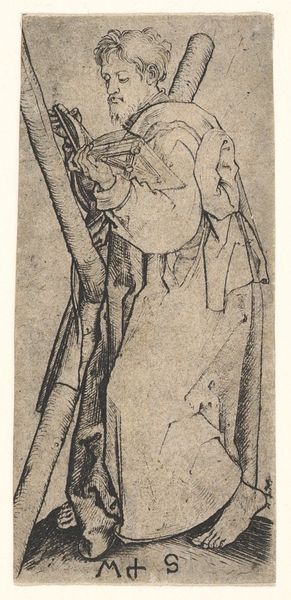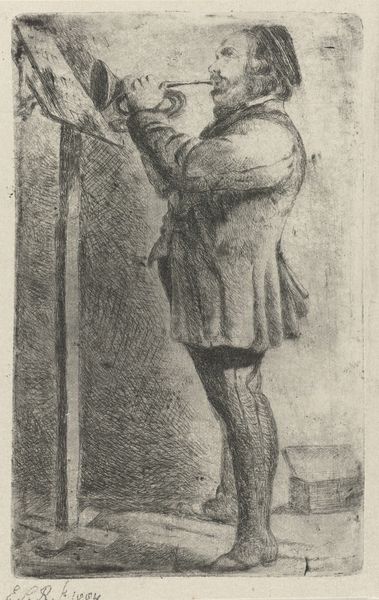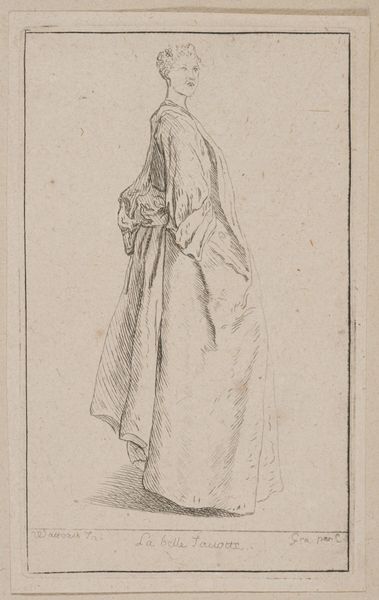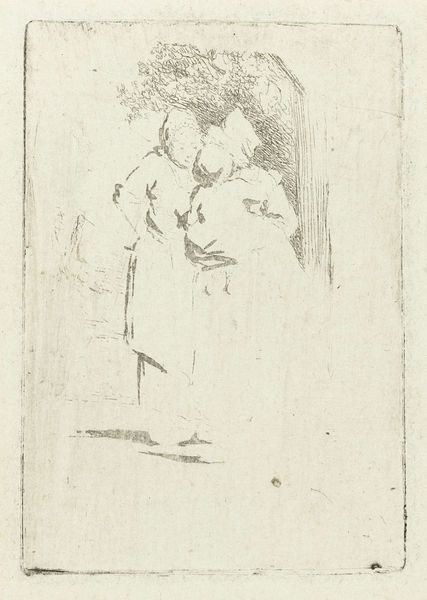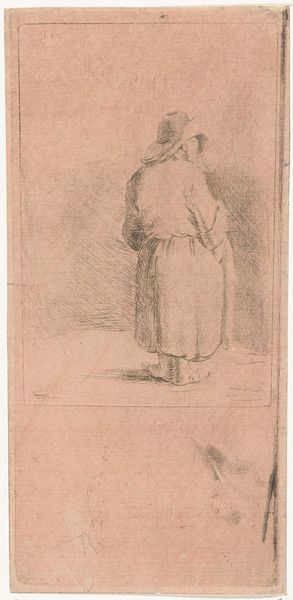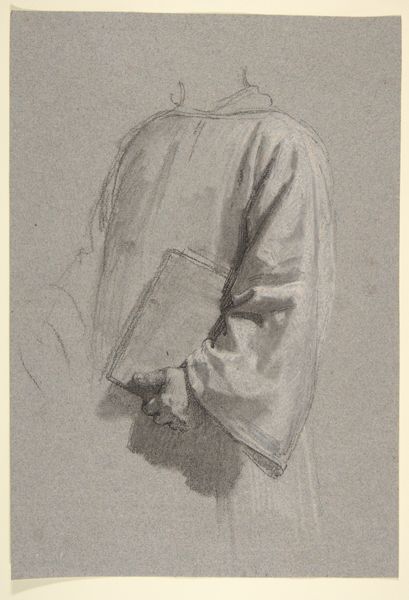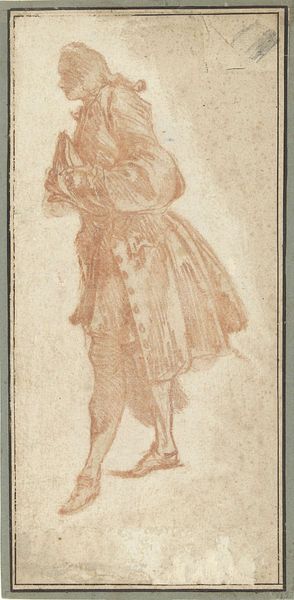
drawing, pencil
#
drawing
#
dutch-golden-age
#
pencil drawing
#
pencil
#
portrait drawing
#
genre-painting
#
realism
Copyright: Public Domain: Artvee
Curator: We’re looking at Adriaen van Ostade's "Study of a Standing Peasant," a pencil drawing created around the 17th century. It’s an intimate portrayal, sketched on a canvas with a lovely blue ground. What strikes you most when you first see it? Editor: Immediately, the stoicism. There's a profound weight conveyed by this man’s posture. The figure leans heavily on what appears to be a ledge, his gaze lowered, suggesting not just weariness but perhaps also a resignation born of socio-economic circumstances. Curator: That's perceptive. Van Ostade, working in the Dutch Golden Age, often depicted scenes of everyday life, and this is characteristic of his attention to the peasantry. Genre paintings, these snapshots of the common man, became increasingly popular. This drawing is fascinating, because it's not the complete, romanticized picture but the start of it—a study of what's often rendered as humorous or simple. Editor: Yes, and I find it important to ask, who gets to create and disseminate these images of the peasant class, and to what end? While these genre scenes could be interpreted as straightforward depictions, it’s equally essential to examine them critically. Curator: Absolutely. And consider this drawing in light of the burgeoning art market during the Dutch Golden Age. Artists needed to produce constantly, to generate material quickly. Studies like these are often quick sketches, almost preparatory for larger paintings, meeting this commercial demand. But it does show van Ostade’s interest in showing people as they are. Editor: Perhaps "as they are" within a frame dictated by market forces and the tastes of a buying public removed from the realities of peasant life. Yet there’s undeniable artistic skill at play in van Ostade’s draftsmanship here—the expressiveness captured in just a few pencil strokes. His economic class is communicated through his hunched posture, and perhaps he's reflecting on an exhausting day of work. This may be a romantic perspective, but how often are laborers offered dignity in artistic portraits? Curator: A thought-provoking question that remains central to conversations around representation today. This sketch serves as a reminder that art, even in its preliminary forms, carries layers of socio-economic implications, inviting us to analyze not just what is depicted, but also who is doing the depicting, and why. Editor: Indeed, looking closer, perhaps this art makes us question our own roles in upholding or dismantling the narratives. It is a humble art piece, rendered with beautiful consideration and artistic capabilities.
Comments
No comments
Be the first to comment and join the conversation on the ultimate creative platform.
